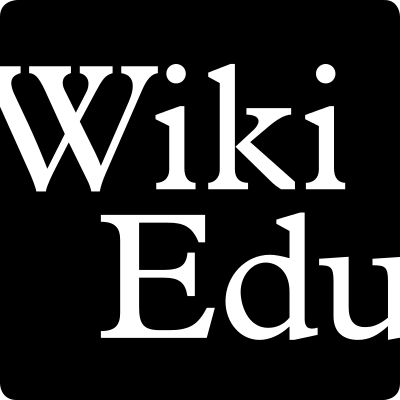When University of New Mexico senior Tessa Hernandez was tasked with a Wikipedia assignment last semester in her Volcanology course, her search for an article to improve led her to discover the stratovolcano article, where she identified critical missing information.
As an Earth and Planetary Sciences major, Tessa used her existing knowledge of the field to identify gaps in the article’s coverage. These gaps included content related to the hazards associated with stratovolcanoes, an area she felt would be important to readers.
With the goal to improve the quality of publicly available information about stratovolcanoes, Tessa significantly expanded the article by adding information about hazards like volcanic ash, lava, volcanic bombs, lahars, and volcanic gases.
“I hope [readers] can understand how a stratovolcano forms and erupts, as well as the hazards associated with stratovolcanoes,” reflected Tessa.
But the benefits of Tessa’s work weren’t limited to helping others. Undertaking the assignment also improved her own scientific knowledge, as well as her writing skills.
“I learned many new things about my subject while reading through papers to properly cite the article,” she explained.
Have you ever seen a cross-section model of a fault line, or of a volcano, or of the Earth itself, and wondered “how do they know that?” A geologist isn’t going to dig a 10-kilometer deep trench to document the geology of Mount Rainier. So where does this information come from?
One of the tools that scientists use to learn about these structures is something called seismic tomography. As Tessa worked on the stratovolcano article, one of her classmates expanded the article about that measurement technique, rewriting the lead section and expanding the articles’ coverage of things like the history of its use, the theory behind it, and its application in studying seismic hazards.
Other students in the class expanded other articles, or created new ones that were missing from Wikipedia, like serial magmatism, a process often discussed when studying the moon’s crust, and a lunar mineral called ferroan anorthosite, which provides insights into the evolution of the early lunar crust.
University of New Mexico Distinguished Professor Tobias Fischer has taught volcanology with Wikipedia since 2021, and his students, including Tessa and her classmates, have added almost 100,000 words and over 1,000 references to the articles they’ve worked on.
“Students realize that what they write matters and has an impact because they see that it is read by many people,” he noted. “This experience empowers them and increases their confidence in being able to make an impact beyond their circle of academic colleagues and classmates.”
When reflecting on his experience incorporating the assignment into his courses, Fischer underscored the satisfaction of watching his students become experts in the content they contribute to Wikipedia.
“My favorite part is to see how some students really immerse themselves in the topic they chose,” said Fischer. “They go beyond the assignment and it becomes part of their missions as educators.”
Our support for STEM classes like Professor Fischer’s is available thanks to the Guru Krupa Foundation.
Interested in incorporating a Wikipedia assignment into your course? Visit teach.wikiedu.org to learn more about the free resources, digital tools, and staff support that Wiki Education offers to postsecondary instructors in the United States and Canada.
Image credit: Caleb Riston, CCO, via Wikimedia Commons
